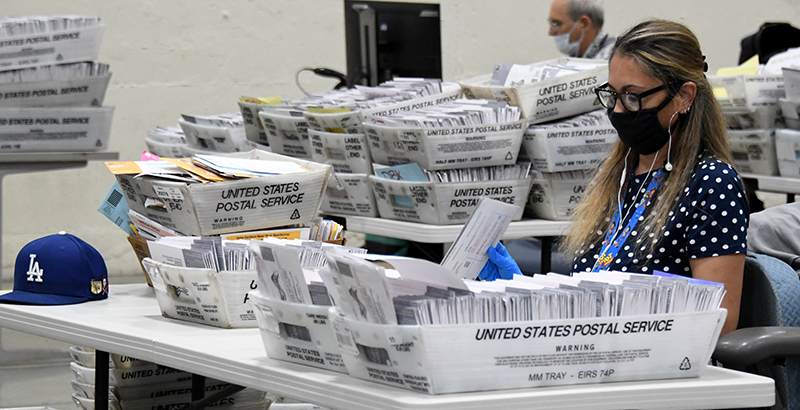With Defeat of California’s ‘Split Roll’ Tax, Advocates Wonder How to Increase Educational Equity

2020’s KEY EDUCATION VOTES: See our full coverage of the 46 races that could reshape America’s schools following Election Day — and get the latest updates on state policies and students’ challenges during the pandemic by signing up for The 74 Newsletter.
Californians have long complained that the state doesn’t adequately fund education. But last week, they still opted not to amend a 40-year-old property tax formula that could have added roughly $4 billion a year to the state’s education budget.
Proposition 15 divided the state in half, with official results released Wednesday showing it fell 51.8 percent against to 48.2 percent in favor. The measure would have altered 1978’s Proposition 13 — known for inspiring a tax revolt across the country — and based commercial and industrial property taxes on market rates instead of purchase price.
Ted Lempert, a former state assemblyman and president of Children Now, an advocacy organization, said he wasn’t surprised the vote was so close, even though the proposition was projected to win before Election Day.
“The governor and legislature will need to take other action to increase school funding,” he said, including increasing spending on early education.
Public Advocates, a nonprofit civil rights law firm that focuses in part on educational equity, blamed “wealthy corporations” for the measure’s defeat. Opponents, led by the business community, spent more than $60 million on opposition efforts. They argued it would force businesses to leave the state and would have been another step toward rolling back Proposition 13’s protections for homeowners as well.
Proponents of the measure — and big-name contributors like Facebook’s Mark Zuckerberg — spent even more, at least $63 million, in their efforts to pass the measure. Democrats across the country, including Sen. Elizabeth Warren in Massachusetts and former presidential candidate Pete Buttigieg, also contributed and campaigned in favor of it.
“Californians know that there is an unacceptable gap between the haves and have-nots in our state,” according to a statement from Public Advocates. “Now, the fight for progressive sources of new revenue turns to the legislature where we can build on this momentum.”
Gov. Gavin Newsom, who endorsed Proposition 15, will introduce the 2021-22 budget early next year. He will then release a revised budget in May when the revenue outlook will be clearer. States are also still waiting on Congress to agree on another pandemic relief package.
In a recent article, Heather Hough, the executive director of Policy Analysis for California Education, said the measure’s defeat would create “a real danger that policymakers will take this as a directive from the voters that investing in schools is not a priority for them.”
Per-student spending in California consistently trails the national average and is half of what New York spends. Proposition 13 often gets the blame, because it shifted a greater share of the responsibility for funding education to the state.
That leaves schools more reliant on personal income taxes, a revenue source that is more “highly susceptible to economic fluctuations and vulnerable during a recession,” according to the policy center’s report.
In 2013, California voters approved the Local Control Funding Formula, intended to distribute more funding to schools serving a greater share of high-needs students. Experts generally agree it’s an equitable system, just that it’s underfunded.
“I think the bones of the [formula] are really good, but there’s an adequacy issue,” said Lawrence Picus, a school finance expert and professor at the University of Southern California. “The real problem in California is that revenues are so tightly tied to the performance of the economy. It’s a boom or bust thing.”
2020’s KEY EDUCATION VOTES: See our full coverage of the 46 races that could reshape America’s schools following Election Day — and get the latest updates on state policies and students’ challenges during the pandemic by signing up for The 74 Newsletter.
Get stories like these delivered straight to your inbox. Sign up for The 74 Newsletter

;)

